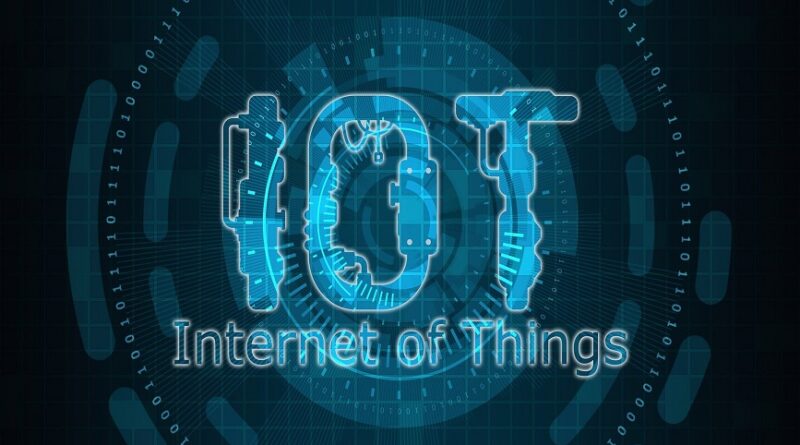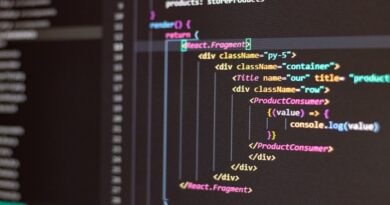The Advancements Shaping the Future of IoT
The Internet of Things (IoT) is the interconnectivity of everyday devices through the internet, allowing them to send and receive data. In recent years, the technology has advanced significantly, leading to the integration of IoT in various industries such as healthcare, agriculture, aquaculture and oceanography.
One of the latest advancements in IoT technology is the integration of 5G networks. With the increased speed and reduced latency offered by 5G, IoT devices can now communicate with each other and the cloud more efficiently, leading to a better overall experience for the user.
The rise of voice assistants such as Amazon Alexa and Google Assistant has also contributed to the growth of IoT. These assistants allow users to control various IoT devices with just their voice, making the technology more accessible and user-friendly.
IoT represents the integration of the physical and digital worlds, enabling previously unconnected devices to communicate with each other and with people, leading to new levels of automation, efficiency, and intelligence.
IoT in Agriculture:
The use of IoT in agriculture, also known as “Agriculture 4.0” or “Precision Agriculture.” This involves the use of IoT devices to collect data on soil moisture, temperature, and other factors, enabling farmers to optimize crop production and reduce waste. For example, sensors can be placed in the soil to measure moisture levels, and irrigation systems can be automated to water crops only when necessary, reducing water waste. This results in increased yields and improved resource management.
IoT in Oceanography:
IoT is also being used in oceanography to better understand our oceans and their ecosystems. For example, IoT devices such as sensors and buoys can be deployed in the ocean to collect data on water temperature, salinity, and other factors, providing valuable insights into oceanic processes. This data can be used to monitor and predict the effects of climate change on the oceans, as well as to track the movements and behavior of marine wildlife. This application of IoT is helping us to better understand and protect our oceans and the life they support.
IoT in Aquaculture:
Using IoT sensors to monitor water quality, temperature, and other parameters in fish and shellfish farms to improve the health and growth of the livestock.
- Water Quality Monitoring: IoT sensors can be used to continuously monitor water quality parameters such as temperature, pH, oxygen levels, and salinity, providing real-time data for farmers to make informed decisions.
- Environmental Monitoring: IoT devices can monitor environmental conditions such as water temperature, light, and currents, ensuring that fish are kept in the ideal conditions for growth and survival.
- Disease Detection: By monitoring, changes in water quality and fish behavior, IoT devices can detect the early signs of diseases, allowing farmers to take action before an outbreak occurs.
IoT in Healthcare :
IoT devices can be used to monitor patients’ vital signs and provide real-time data to healthcare professionals, enabling remote patient monitoring and improved patient care. IoT in healthcare includes wearable devices for monitoring vital signs, smart pills for tracking medication adherence, and telemedicine technologies for remote patient consultations. By enabling real-time monitoring and analysis of patient data, IoT in healthcare has the potential to transform the way healthcare is delivered and improve patient outcome
Latest facts about IOT :
- Edge computing is becoming increasingly important in IoT, allowing for data processing closer to the source and reducing the need for data transmission to the cloud.
- 5G technology is enabling faster and more reliable communication for IoT devices, leading to new opportunities for innovation and growth.
- IoT is leading to the development of smart cities, with connected devices and systems improving urban services and quality of life.
- The industrial IoT (IIoT) market is growing rapidly, with increasing investment in technologies for predictive maintenance and process optimization.
- The use of low-power, wide-area networks (LPWANs) is becoming more widespread, providing cost-effective connectivity for IoT devices.
- Voice-activated virtual assistants such as Amazon Alexa and Google Home are becoming increasingly popular and are seen as a key part of the IoT ecosystem.
- The integration of blockchain technology with IoT has the potential to enhance security and trust in IoT systems.
- IoT is driving innovation in fields such as artificial intelligence and machine learning, as well as new business models and revenue streams.




